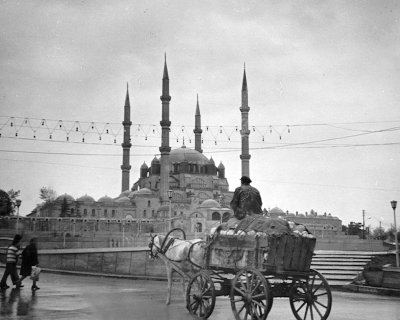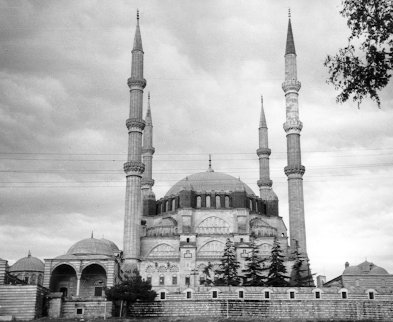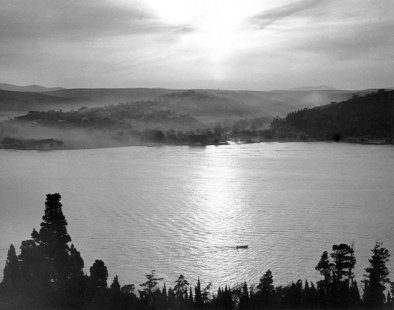Ottoman Telegraph
Today, the telegraph connects Europe and Asia. The University of Houston's College of Engineering presents this series about the machines that make our civilization run, and the people whose ingenuity created them.
At its height, the Ottoman Empire stretched from the gates of Vienna to Yemen, from Algeria to Baghdad. By 1837, the Empire was in a long slow decline. But that was also the year Samuel F.B. Morse perfected his telegraph system. Almost immediately, a Morse representative went to Istanbul to sell the Sultan on telegraphy. But his equipment failed. He started back to Vienna for repairs, but then his boat capsized on the Danube, and he drowned.
A few years later, the Sultan finally saw a working telegraph system and was intrigued. At the same time, the British were building an ambitious telegraph system far on the other side of the Ottoman Empire -- in India. By 1855, the India system was running, and the Ottomans, joined by the British and French, were at war with Russia in the Crimean Peninsula.
All this was making the role of the Ottoman Empire as Europe's land link to Asia very clear. And the Crimean War, just across the Black Sea, was exposing the need for telegraphic communication.
The British had quickly connected Europe to the Crimea with a 340-mile cable in the Black Sea. But lines would have to run all the way across the Ottoman Empire to link Europe with India. Historian Yakup Bektas tells how the Sultan's interest in telegraphy initially made his subjects nervous. It would clearly strengthen his control in remote regions of the Empire.
But the system was built, first from Edirne, near the Bulgarian border, to Istanbul, and then all the way to Karachi -- still a part of India. Local pashas resisted the telegraph, religious fundamentalists objected that corrupt ideas could travel those wires, and citizens raided the lines for wood and copper. Finally, a small army was given the task of protecting the system. Alphabets posed another difficulty. Turkish, whose alphabet was then a version of Arabic, needed special equipment. But English and French were also used.
The system went on line in 1865. A year later, the transatlantic cable opened to service in the West, and the world was linked all the way from Bengal to Alaska. The world's first global communication network had been built. For a while, as the Sultan had hoped, telegraphy helped shore up his regime. The Ottoman Empire lasted until it became a casualty of WW-I.
The Allies divided the Ottoman Empire among themselves in 1919. But then, the legendary leader Mustafa Kemal Atatürk rose up to unite an underground army and create the new republic of Turkey. And Turkish school children today read about heroic operators who used the Ottoman telegraph to organize and rebel against their European occupiers. The ironies of that story echo in today's Internet. For we watch it, like the telegraph, promising to serve us as a fine new instrument of commerce -- as well as a potential weapon in every sort of rebellion.
I'm John Lienhard, at the University of Houston, where we're interested in the way inventive minds work.
(Theme music)
Bektas, Y., The Sultan's Messenger: Cultural Constructions of Ottoman Telegraphy, 1847-1880. Technology and Culture, Vol. 41, No. 4, 2001, pp. 669-696.
I am grateful to Baris Bayazit, UH Mechanical Engineering Department, for his counsel on this episode.

The Mosque at Edirne, Turkey -- the city where the Ottoman telegraph began. (Notice the communication wires in front of the Mosque.)

The Blue Mosque in Istanbul (with communication wires in front of it).

Where the wires went from Istanbul: The view across the Bosporus into Asian Turkey, or Anatolia, as it is called.
Photos by John Lienhard